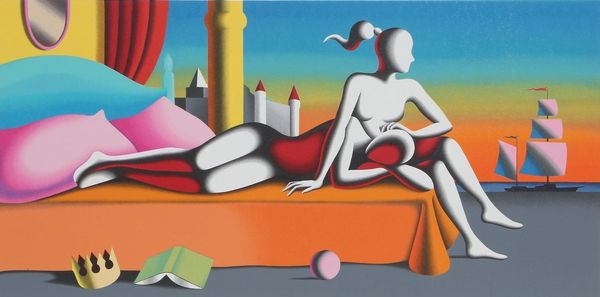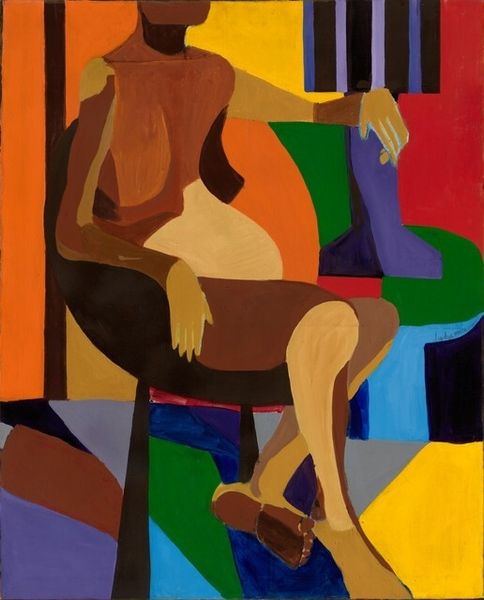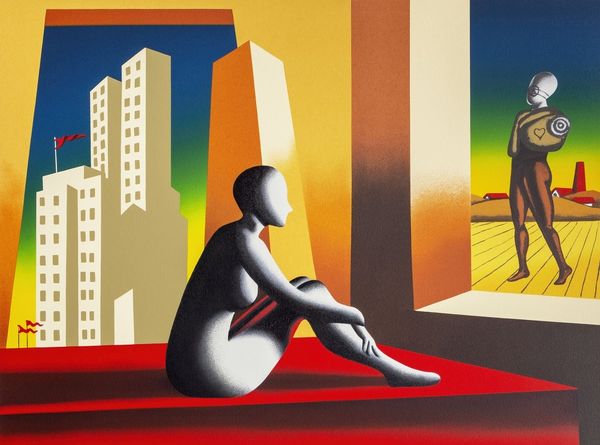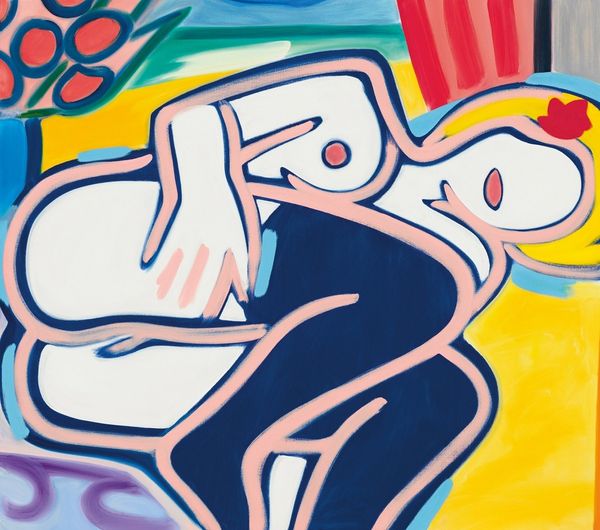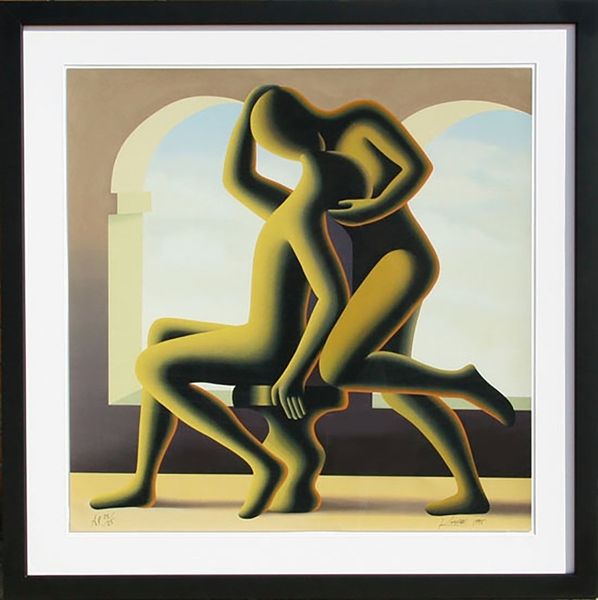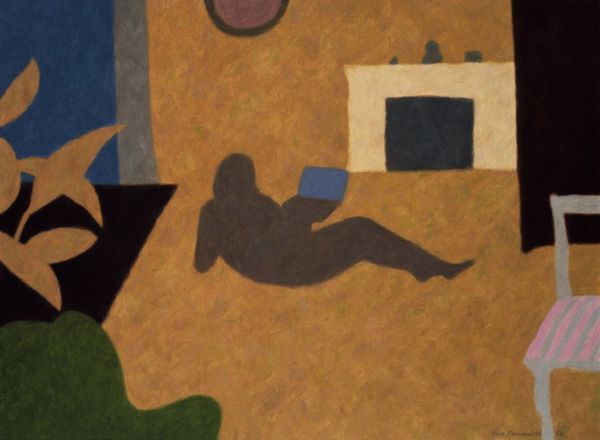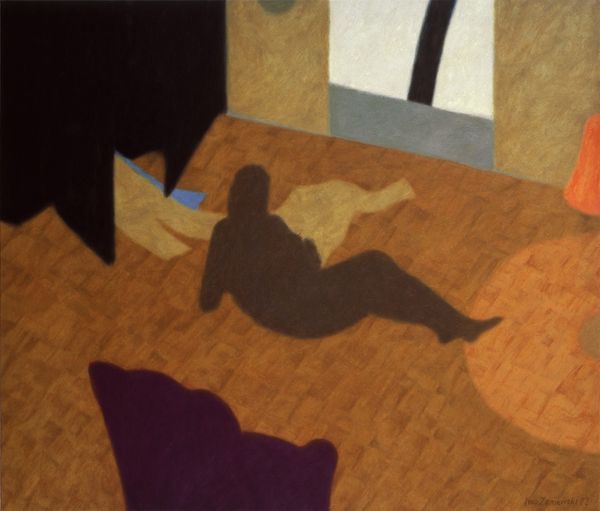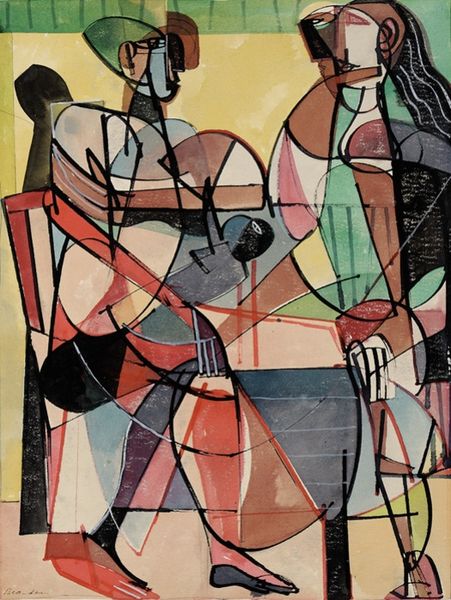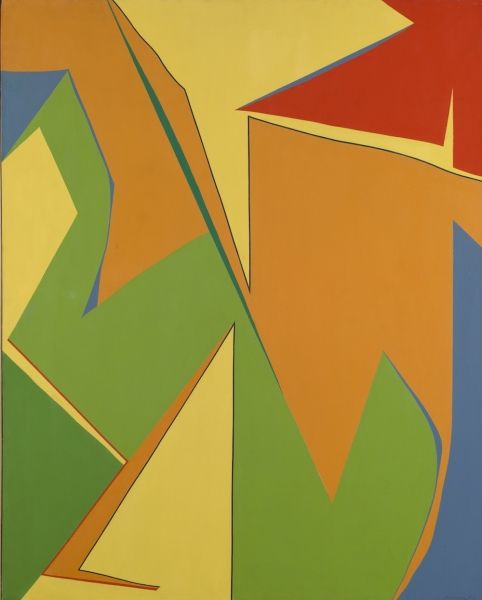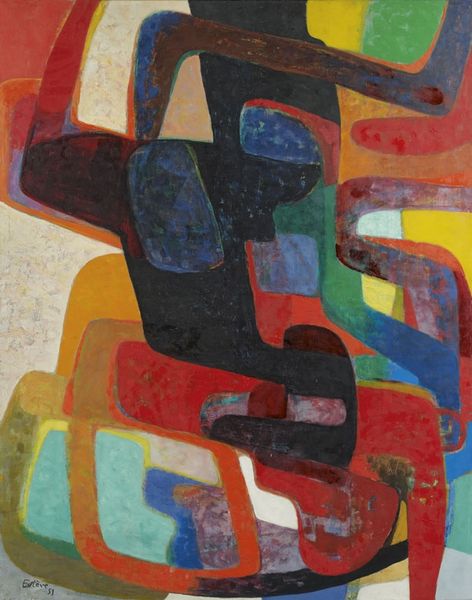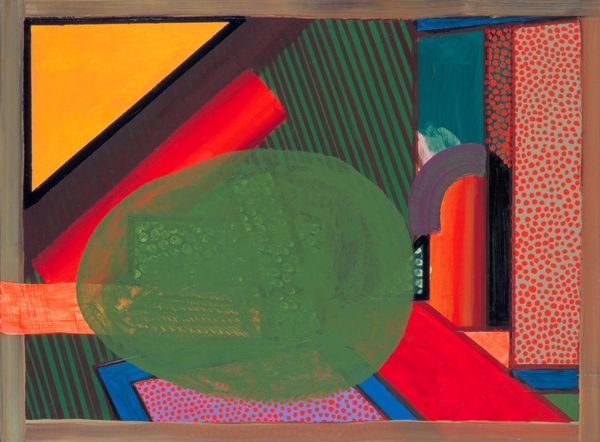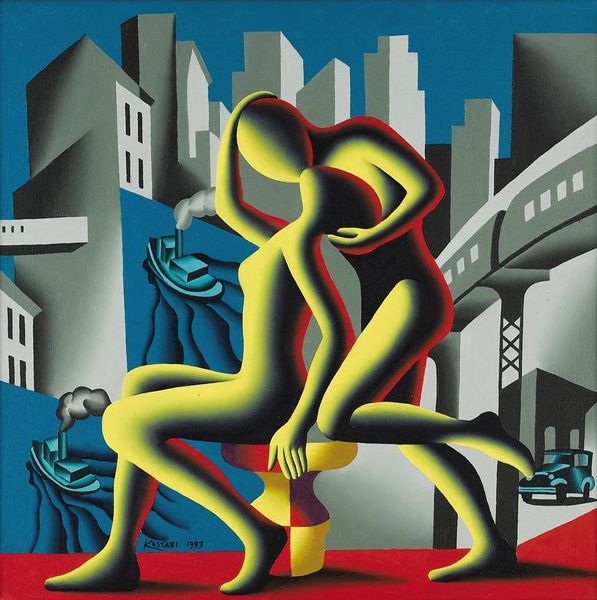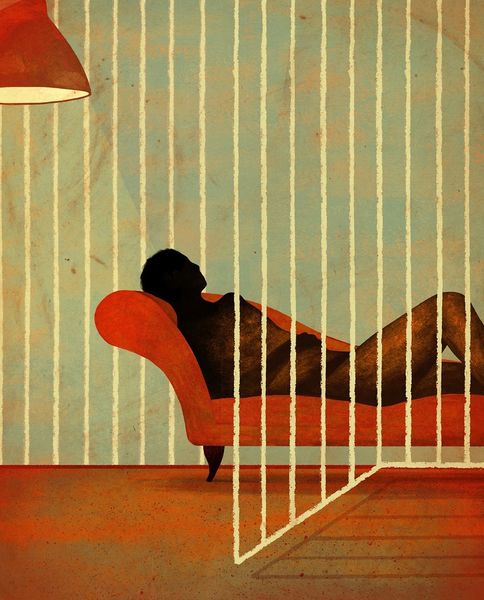
Dimensions: 76 x 76 cm
Copyright: Gil Nicolescu,Fair Use
Editor: Gil Nicolescu’s "Odihna," painted in 2001, utilizes acrylic on canvas to depict a figure in repose. The composition is striking, the bright yellow figure stark against the darker interior. What can you tell me about its historical context or how it engages with social commentary? Curator: Nicolescu’s work can be viewed through the lens of post-communist Romanian art. Notice the almost brutalist architecture outside the window. Does this starkness and the interior's geometric design reflect a critique of the planned, often dehumanizing, urban spaces of that era? Editor: That's an interesting observation. I was more focused on the vibrant colour of the figure, reading it as celebratory, not critical. Curator: Perhaps both readings are valid. Colour can be deceptive. How might the figure's act of 'resting,' *odihna* in Romanian, be interpreted within this post-socialist context? Is it a statement of newfound leisure, or perhaps of disillusionment after the societal upheaval? Editor: I hadn’t considered the title in relation to the architectural context. Maybe the "rest" isn't restful, but weary, or even burdened? Curator: Precisely. Furthermore, how does the almost detached portrait on the wall function? Is it an idealized past self, a representation of lost hope, observing this moment of, potentially, melancholic repose? Consider the politics of imagery – what’s included, and just as importantly, what’s left out? Editor: It adds another layer of complexity. It's as if the painting becomes a commentary on the individual’s place within a changing social landscape. Thank you! I will never see paintings about relaxation the same way. Curator: Indeed. The public role of art lies in posing such questions, not necessarily answering them definitively. The historical analysis can then add nuances and depth.
Comments
No comments
Be the first to comment and join the conversation on the ultimate creative platform.
